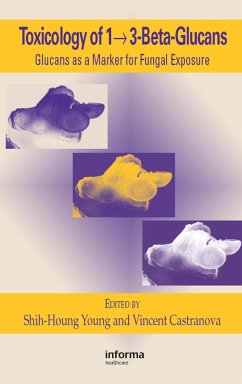A component of the fungal cell wall, 1 3-glucans not only affect human health, they are a marker for the existence of fungi in environmental samples. This book introduces current methods for detecting 1 3-glucans in environmental samples and reviews risk evaluation in the environment. It discusses numerous topics including likely occupational and environmental exposure, studies suggesting a strong link between environmental glucan concentrations and pulmonary inflammation, and signal transduction pathways and specific receptors. A unique volume, the book pulls together the expertise of leading international researchers to provide a straightforward monograph on the toxicology of 1 3-glucans.
Dieser Download kann aus rechtlichen Gründen nur mit Rechnungsadresse in A, B, BG, CY, CZ, D, DK, EW, E, FIN, F, GR, HR, H, IRL, I, LT, L, LR, M, NL, PL, P, R, S, SLO, SK ausgeliefert werden.


